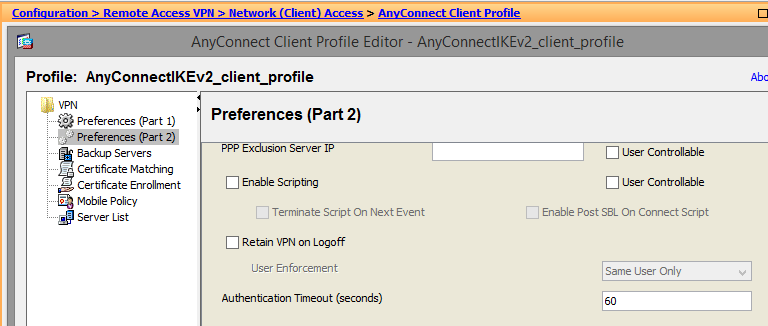Cisco Anyconnect Vpn Installer Package Editor Sims

Duo integrates with your Cisco ASA VPN to add tokenless two-factor authentication to any VPN login. Overview The Cisco AnyConnect RADIUS instructions supports push, phone call, or passcode authentication for desktop and mobile client connections that use SSL encryption. Gengoroh tagame boy in hell. This configuration does not feature the interactive Duo Prompt for web-based logins, but does capture client IP informations for use with, such as geolocation and authorized networks.
Dec 28, 2015 This is a tutorial on how to install the Cisco VPN client on Windows 10. If you're here you probably know that Cisco's VPN client is not supported on Windows 10 and that Cisco has ceased. If you've upgraded to the Windows 10 Anniversary Update and use the Cisco AnyConnect VPN Client, you may run into a problem during the installation.
If you need and the for web-based VPN logins, refer to the. The feature inline enrollment and the interactive Duo Prompt for both web-based VPN logins and AnyConnect 4.6+ client logins. This deployment option requires that you have a SAML 2.0 identity provider in place that features Duo authentication, like the. Primary and Duo secondary authentication occur at the identity provider, not at the ASA itself. Please refer to the to learn more about the different options for protecting ASA logins with Duo MFA. If you need to protect connections that use Cisco's desktop VPN client (IKE encryption), use our.
Before starting, make sure that Duo is compatible with your Cisco ASA device. Log on to your Cisco ASDM interface and verify that your Cisco ASA firmware is version 8.3 or later.
First Steps You should already have a working primary authentication configuration for your Cisco ASA SSL VPN users before you begin to deploy Duo. To integrate Duo with your Cisco ASA SSL VPN, you will need to install a local proxy service on a machine within your network. This Duo proxy server also acts as a RADIUS server — there's usually no need to deploy a separate RADIUS server to use Duo. Before proceeding, you should locate (or set up) a system on which you will install the Duo Authentication Proxy. The proxy supports Windows and Linux systems (in particular, we recommend Windows Server 2012 R2 or later, Red Hat Enterprise Linux 7 or later, CentOS 7 or later, or Debian 7 or later).
Then you'll need to: •. • Log in to the and navigate to Applications. • Click Protect an Application and locate Cisco RADIUS VPN in the applications list. Click Protect this Application to get your integration key, secret key, and API hostname.
See for help. • Ensure that Perl, Python 2.6 or 2.7 (including development headers and libraries), and a compiler toolchain are installed. On most recent RPM-based distributions — like Fedora, RedHat Enterprise, and CentOS — you can install these by running (as root): $ yum install gcc make python-devel libffi-devel perl zlib-devel On Debian-derived systems, install these dependencies by running (as root): $ apt-get install build-essential python-dev libffi-dev perl zlib1g-dev • Download the most recent Authentication Proxy for Unix from.
Depending on your download method, the actual filename may reflect the version e.g. View checksums for Duo downloads. • Extract the Authentication Proxy files and build it as follows: $ tar xzf duoauthproxy-latest-src.tgz $ cd duoauthproxy- version-src $ make • Install the authentication proxy (as root): $ cd duoauthproxy-build $./install Follow the prompts to complete the installation.
If you ever need to uninstall the proxy, run /opt/duoauthproxy/uninstall. Configure the Proxy After the installation completes, you will need to configure the proxy. The Duo Authentication Proxy configuration file is named authproxy.cfg, and is located in the conf subdirectory of the proxy installation. With default installation paths, the proxy configuration file will be located at: Platform Default Configuration Path Windows (64-bit) C: Program Files (x86) Duo Security Authentication Proxy conf authproxy.cfg Windows (32-bit) C: Program Files Duo Security Authentication Proxy conf authproxy.cfg Linux /opt/duoauthproxy/conf/authproxy.cfg The configuration file is formatted as a simple.
Section headings appear as: [section] Individual properties beneath a section appear as: name=value The Authentication Proxy may include an existing authproxy.cfg with some example content. For the purposes of these instructions, however, you should delete the existing content and start with a blank text file. We recommend using WordPad or another text editor instead of Notepad when editing the config file on Windows. Configure the Proxy for Your Primary Authenticator In this step, you'll set up the Proxy's primary authenticator — the system which will validate users' existing passwords.